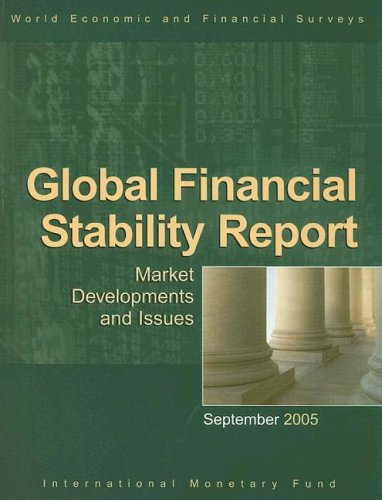

Most ebook files are in PDF format, so you can easily read them using various software such as Foxit Reader or directly on the Google Chrome browser.
Some ebook files are released by publishers in other formats such as .awz, .mobi, .epub, .fb2, etc. You may need to install specific software to read these formats on mobile/PC, such as Calibre.
Please read the tutorial at this link: https://ebookbell.com/faq
We offer FREE conversion to the popular formats you request; however, this may take some time. Therefore, right after payment, please email us, and we will try to provide the service as quickly as possible.
For some exceptional file formats or broken links (if any), please refrain from opening any disputes. Instead, email us first, and we will try to assist within a maximum of 6 hours.
EbookBell Team

0.0
0 reviews
ISBN 10: 1589062108
ISBN 13: 9781589062108
Author: International Monetary Fund
Part I: Overview and Global Financial Stability Assessment
Chapter 1: Global Financial Stability Assessment—Navigating Fragile Recoveries
1.1 Current State of Global Financial Stability:
Assessment of systemic risks and vulnerabilities.
Interplay between macroeconomic trends and financial markets.
1.2 Key Developments in Advanced Economies:
Monetary policy stances and their impact (e.g., interest rates, quantitative easing/tightening).
Financial sector resilience (banks, non-bank financial institutions).
Sovereign debt dynamics and fiscal policies.
1.3 Key Developments in Emerging Markets and Developing Economies (EMDEs):
Capital flows and exchange rate volatility.
Debt sustainability concerns (public and private).
Commodity price impacts and external vulnerabilities.
1.4 Cross-Border Linkages and Spillovers:
Contagion risks and interconnectedness of global markets.
Impact of geopolitical events and fragmentation.
1.5 Policy Recommendations for Enhancing Resilience:
Monetary, fiscal, and macroprudential policy advice.
Recommendations for international cooperation.
Part II: Market Developments and Specific Issues
Chapter 2: Global Financial Market Developments
2.1 Equity Markets:
Valuations, sector performance, and regional trends.
Impact of earnings, interest rates, and investor sentiment.
2.2 Fixed-Income Markets (Government and Corporate Bonds):
Sovereign bond yields and spreads.
Corporate credit spreads and default rates.
Liquidity conditions and market functioning.
2.3 Foreign Exchange Markets:
Major currency movements and drivers.
Implications for trade, capital flows, and inflation.
2.4 Commodity Markets:
Price trends in energy, metals, and agricultural commodities.
Impact on inflation, producer, and consumer countries.
2.5 Derivatives Markets:
Trends in interest rate, currency, and credit derivatives.
Role in risk management and potential for systemic risk.
Chapter 3: Focus Topic A – [e.g., Climate Transition Risks and Financial Stability]
This chapter (and subsequent focus chapters) typically delves into a specific, timely financial stability issue.
3.1 Introduction to the Issue: Defining the problem and its relevance.
3.2 Channels of Financial System Impact: How the issue affects banks, insurers, asset managers.
3.3 Data and Analytical Framework: Empirical analysis and modeling approaches.
3.4 Vulnerabilities and Opportunities: Identifying risks and potential for innovation.
3.5 Policy Implications and Recommendations: Specific actions for regulators and policymakers.
Chapter 4: Focus Topic B – [e.g., The Evolving Landscape of Digital Assets and Crypto Markets]
4.1 Defining Digital Assets and their Ecosystem: Cryptocurrencies, stablecoins, DeFi, NFTs.
4.2 Financial Stability Implications: Volatility, interconnectedness, regulatory arbitrage.
4.3 Regulatory Frameworks and Challenges: National and international approaches.
4.4 Opportunities and Risks for Traditional Finance: Integration and disruption.
4.5 Policy Recommendations for Mitigating Risks.
Chapter 5: Focus Topic C – [e.g., Private Credit Markets: Growth, Risks, and Regulation]
5.1 Growth Drivers and Structure of Private Credit: Direct lending, distressed debt, real estate.
5.2 Financial Stability Concerns: Liquidity, valuation, interconnectedness with traditional finance.
5.3 Regulatory Gaps and Supervision: Monitoring and managing risks in a less transparent sector.
5.4 Role in Corporate Financing: Implications for small and medium-sized enterprises (SMEs).
5.5 Policy Recommendations.
lobal financial stability
global financial stability report in hindi
safeguarding global financial stability in a new era
financial stability by country
global financial stability report recently released by which organisation